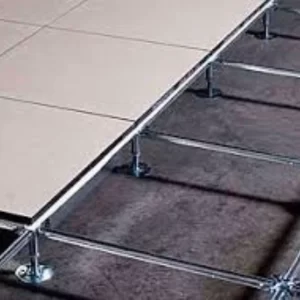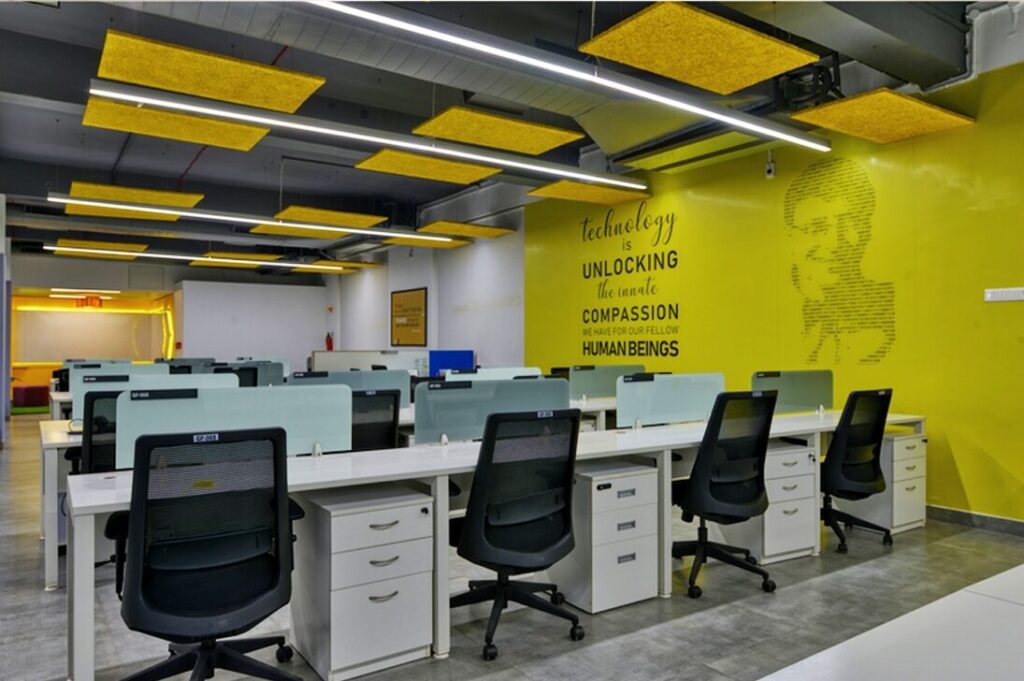The Troubleshooting Tips for Raised Access Flooring Problems
Introduction
Tips for Raised Access Flooring Problems, systems are widely used in commercial buildings to provide flexibility, accessibility, and efficient cable management. However, like any other construction element, raised access floors can encounter problems that need troubleshooting. In this article, we will explore common issues faced with raised access flooring and provide practical tips to troubleshoot and resolve them effectively.

Understanding Raised Access Flooring Systems
Raised access flooring refers to an elevated floor system consisting of individual floor panels supported by pedestals or understructures. The space between the structural floor and the raised access floor allows for the installation of various utilities such as electrical wiring, data cables, HVAC ducts, and plumbing. These systems offer flexibility, adaptability, and easy access to services, making them popular in offices, data centers, server rooms, and other commercial environments.
Identifying Common Problems
Despite the benefits they offer, raised access flooring systems can encounter several issues that may affect their performance, safety, and longevity. Understanding and promptly addressing these problems is crucial to maintaining a functional and reliable floor system. Some common problems include:
- Loose or unstable floor panels
- Uneven floor height
- Damaged or missing floor tiles
- Poor cable management
- Excessive noise or vibration
- Moisture and water damage
- HVAC and airflow issues
- Fire safety concerns
- Accessibility and maintenance challenges
- Inadequate grounding
- Electrostatic discharge (ESD) concerns
- Insufficient load capacity
- Structural deficiencies
- Pest infestation
- Aging and wear
Troubleshooting Tips
- Loose or Unstable Floor Panels
- Inspect the floor panels and pedestals for any signs of damage or misalignment.
- Tighten or replace loose screws, bolts, or fasteners that secure the panels to the pedestals.
- Reinforce weak or damaged pedestals by adding additional support.
- Ensure that the floor panels are properly seated and aligned within the grid.
- Uneven Floor Height
- Use a leveling tool to measure the height differences between floor panels.
- Adjust the pedestals to bring the panels to a consistent and level height.
- Consider using shims or leveling compounds to correct minor height variations.
- Damaged or Missing Floor Tiles
- Replace damaged or broken floor tiles with new ones of the same specification.
- Ensure that the replacement tiles fit securely and align with the surrounding tiles.
- Clean the floor thoroughly before installing new tiles to avoid debris or unevenness.
- Poor Cable Management
- Organize and route cables properly to prevent tangling and interference.
- Use cable trays, conduits, or raised floor cable management systems to maintain an organized cable layout.
- Label cables and document their paths for easier identification and troubleshooting.
- Excessive Noise or Vibration
- Identify the source of the noise or vibration, such as loose panels, equipment, or HVAC systems.
- Tighten loose components, secure equipment, or isolate vibrating sources.
- Consider installing vibration-damping materials or resilient underlayments to reduce noise transmission.
- Moisture and Water Damage
- Inspect the floor system for signs of water infiltration or leaks.
- Repair damaged waterproofing layers or seals.
- Improve drainage systems and address any water source near the raised access flooring.
- HVAC and Airflow Issues
- Ensure proper ventilation and airflow distribution throughout the raised floor system.
- Regularly clean air vents and filters to prevent blockages and maintain air quality.
- Optimize airflow paths to minimize temperature differentials and hotspots.
- Fire Safety Concerns
- Verify compliance with fire safety regulations for raised access flooring systems.
- Install fire-resistant floor tiles, grommets, and seals to inhibit fire spread.
- Regularly inspect and maintain fire suppression systems, such as fire extinguishers and sprinklers.
- Accessibility and Maintenance Challenges
- Establish a routine maintenance schedule for inspecting and cleaning the raised floor system.
- Ensure easy access to underfloor utilities by maintaining clear pathways.
- Train staff on proper maintenance procedures and safety precautions.
- Inadequate Grounding
- Verify that all metallic components, including pedestals and panels, are properly grounded.
- Test the grounding system periodically to ensure its effectiveness.
- Consult an electrician or grounding specialist if grounding issues persist.
- Electrostatic Discharge (ESD) Concerns
- Install anti-static floor tiles or coatings to mitigate electrostatic discharge risks.
- Use conductive adhesives or grounding strips for enhanced ESD protection.
- Educate personnel about ESD prevention measures and proper grounding techniques.
- Insufficient Load Capacity
- Assess the load requirements of the raised access flooring system.
- Reinforce or upgrade the floor panels, pedestals, or understructure if necessary.
- Consider redistributing heavy loads or adding additional support in high-load areas.
- Structural Deficiencies
- Inspect the structural integrity of the raised access flooring system.
- Address any signs of sagging, cracks, or excessive deflection.
- Consult a structural engineer for a comprehensive assessment and necessary repairs.
- Pest Infestation
- Seal all gaps and openings to prevent pests from entering the underfloor space.
- Implement pest control measures such as traps or baits as needed.
- Maintain cleanliness and proper waste management to discourage pests.
-
- Aging and Wear
- Regularly inspect the floor panels, pedestals, and components for signs of wear or deterioration.
- Replace worn-out or damaged parts to maintain the integrity of the system.
- Consider periodic refurbishment or upgrades to extend the lifespan of the raised access flooring.
Conclusion – The Troubleshooting Tips for Raised Access Flooring Problems
Troubleshooting raised access flooring problems requires a systematic approach and attention to detail. By understanding common issues and implementing the appropriate solutions, you can ensure the optimal performance, safety, and longevity of your raised access flooring system. Regular maintenance, timely repairs, and adherence to industry best practices will help you overcome challenges and maximize the benefits of this versatile architectural feature.
Frequently Asked Question- The Troubleshooting Tips for Raised Access Flooring Problems
- Can I install a raised access flooring system in a residential building?
Answer: Yes, raised access flooring systems can be installed in residential buildings, particularly in spaces where easy access to utilities and services is desired, such as basements or home offices. - How often should I schedule maintenance for my raised access flooring system?
Answer: The frequency of maintenance depends on various factors, including the system’s usage, environment, and specific requirements. Generally, it is recommended to perform routine inspections and cleaning at least once or twice a year. - Can raised access flooring systems support heavy equipment or machinery?
Answer: Yes, raised access flooring systems can be engineered to support heavy loads. It is important to assess the load requirements and ensure that the system’s components are designed accordingly. - Are there any fire safety regulations specific to raised access flooring systems?
Answer: Fire safety regulations may vary depending on the jurisdiction and building codes. It is crucial to consult local authorities and adhere to the recommended fire safety measures for raised access flooring installations. - How long does a raised access flooring system typically last?
Answer: The lifespan of a raised access flooring system can vary depending on factors such as maintenance, usage, and quality of materials. With proper care and maintenance, these systems can last for 20 to 30 years or more.
Other Products

Pet polyester acoustic panels

Wood wool board

Magnesium oxide board
Contact Us
Mobile: +919008400701 / 705
Email: sales@jayswalgroup.com

Visit Us
Address:
#6, 10th B Cross, Jayswal Center, KHB Main Road, Kaveri Nagar, Kanakanagar, RT Nagar, Bangalore – 560032, Karnataka, India.
Other Websites: